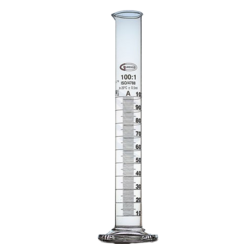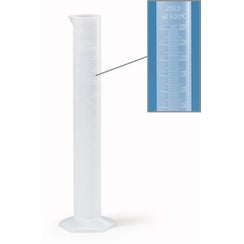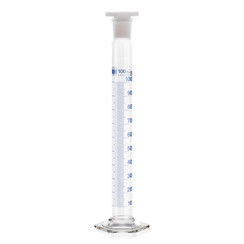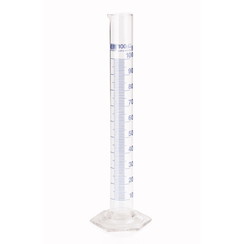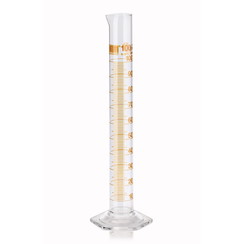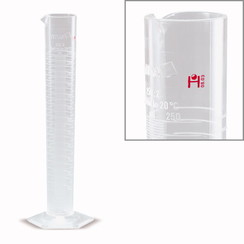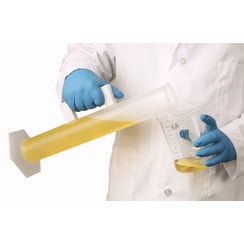You have no items in your shopping cart
Measuring cylinders
A graduated cylinder, also known as a mixing cylinder, is a common laboratory device used to measure the volume of a liquid. It has a narrow cylindrical shape. Each marked line on the graduated cylinder represents the amount of liquid measured.
Large graduated cylinders are usually made of polypropylene for its excellent chemical resistance or polymethylpentene for transparency, making them lighter and less fragile than glass. Polypropylene (PP) is easy to autoclave repeatedly; Autoclaving above about 121 °C (250 °F) (depending on the chemical formulation: typical commercial grade polypropylene melts above 177 °C (351 °F)), can deform or damage cylinders of grade polypropylene, compromising accuracy.
A traditional graduated cylinder is usually narrow and tall to increase the accuracy and precision of volume measurement. It has a plastic or glass base (stand, base, support) and a "spout" for easy pouring of the measured liquid. Another version is wide and low.
Mixing cylinders have ground glass connections instead of a spout, so they can be closed with a stopper or connected directly to other elements of a manifold. With this type of cylinder, the measured liquid does not pour directly, but is often removed with a cannula. A graduated cylinder is intended to be read with the liquid surface at eye level, where the center of the meniscus marks the measurement line. Typical capacities of graduated cylinders are from 10 ml to 2000 ml.
There are two accuracy classes for graduated cylinders. Class A has twice the accuracy of Class B. Cylinders can have single or double scales. Single scales allow the volume to be read from top to bottom (fill volume), while double scale cylinders can be read for filling and pouring (reverse scale).
Graduated cylinders are calibrated either "to contain" (declared volume of liquid in the cylinder) and marked "TC" or "deliverable" (indicated volume of liquid poured out, taking into account traces of liquid left in the cylinder) and marked "TD ". In the past, the tolerances for "deliver" and "contain" cylinders were different; but now these are the same. It is also more likely that the international symbols "IN" and "EX" are used instead of "TC" and "TD", respectively.
To accurately read the volume, the observation should be at eye level and read at the bottom of a meniscus of the fluid level. The main reason volume reading is done through the meniscus is because of the nature of the fluid in a closed, enclosed space. Naturally, liquid in the cylinder would be attracted to the wall around it by molecular forces. This forces the liquid surface to develop a convex or concave shape, depending on the type of liquid in the cylinder. Reading the fluid at the bottom of a concave or the top of the convex fluid is equivalent to reading the fluid at its meniscus. In the photo, the level of the fluid is read at the bottom of the meniscus, which is concave. The most accurate reading that could be done here has been reduced to 1ml due to the gauges given on the cylinder.
We at Laboratory discounter sell all types and sizes, we also offer our private label cylinder for a nice price.


